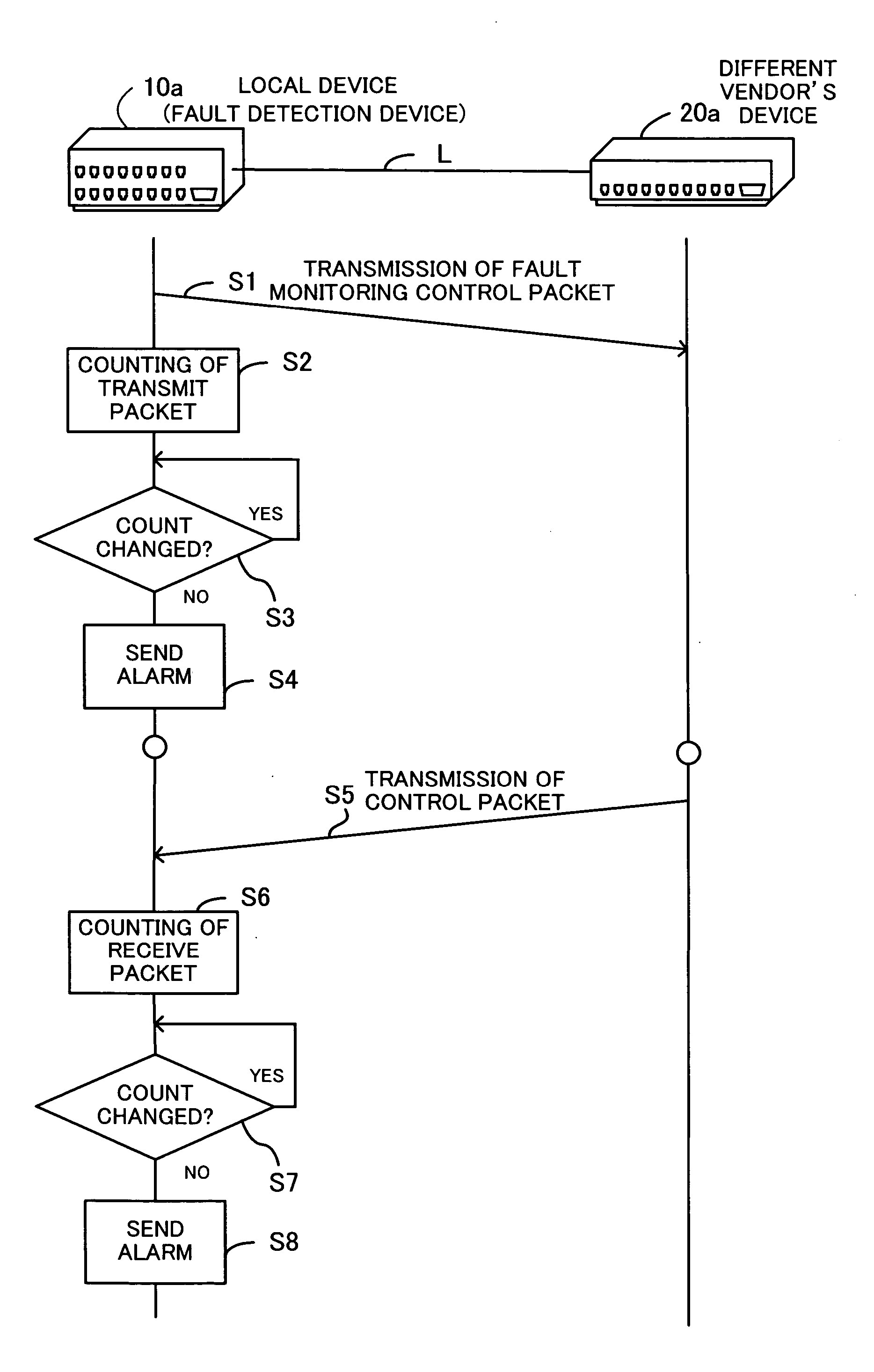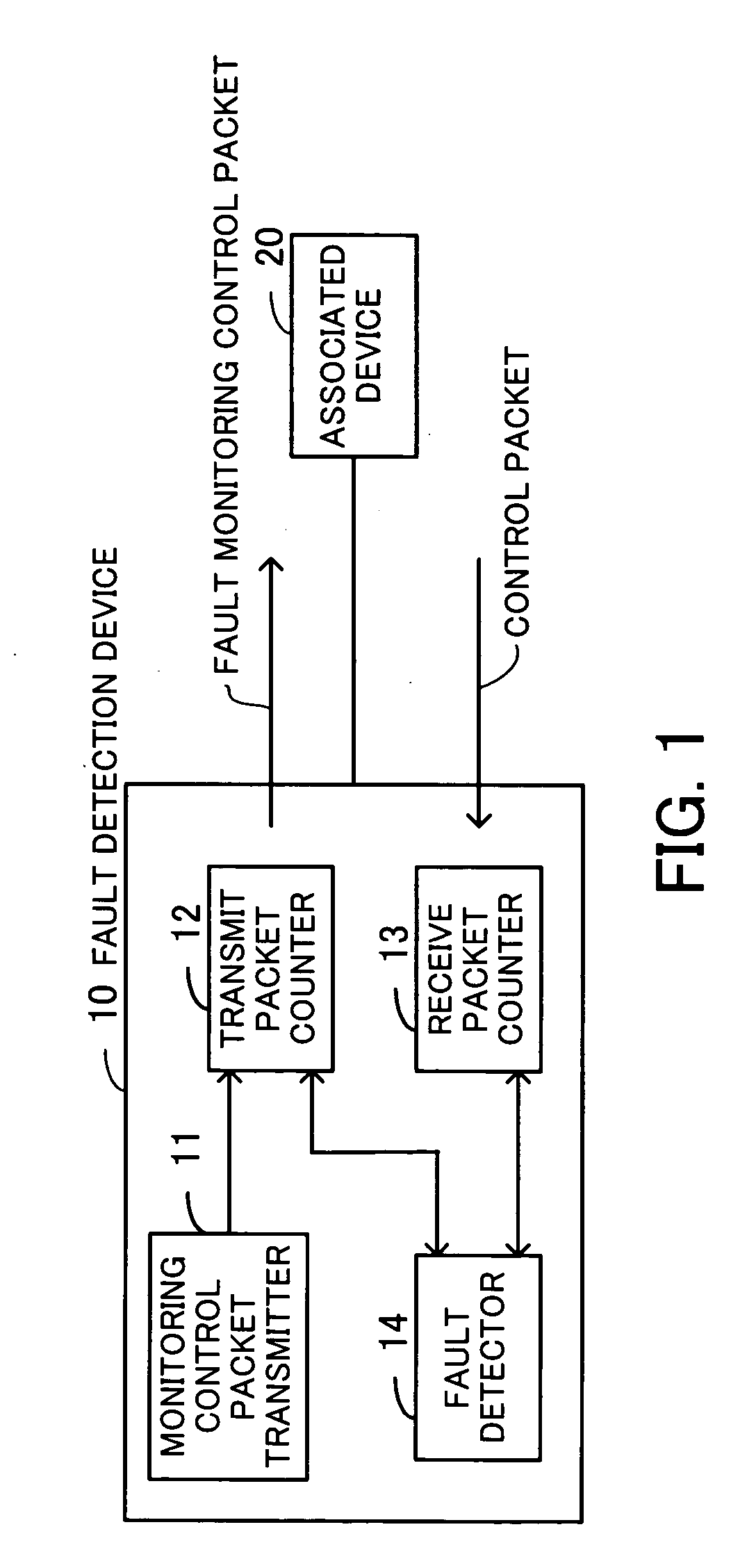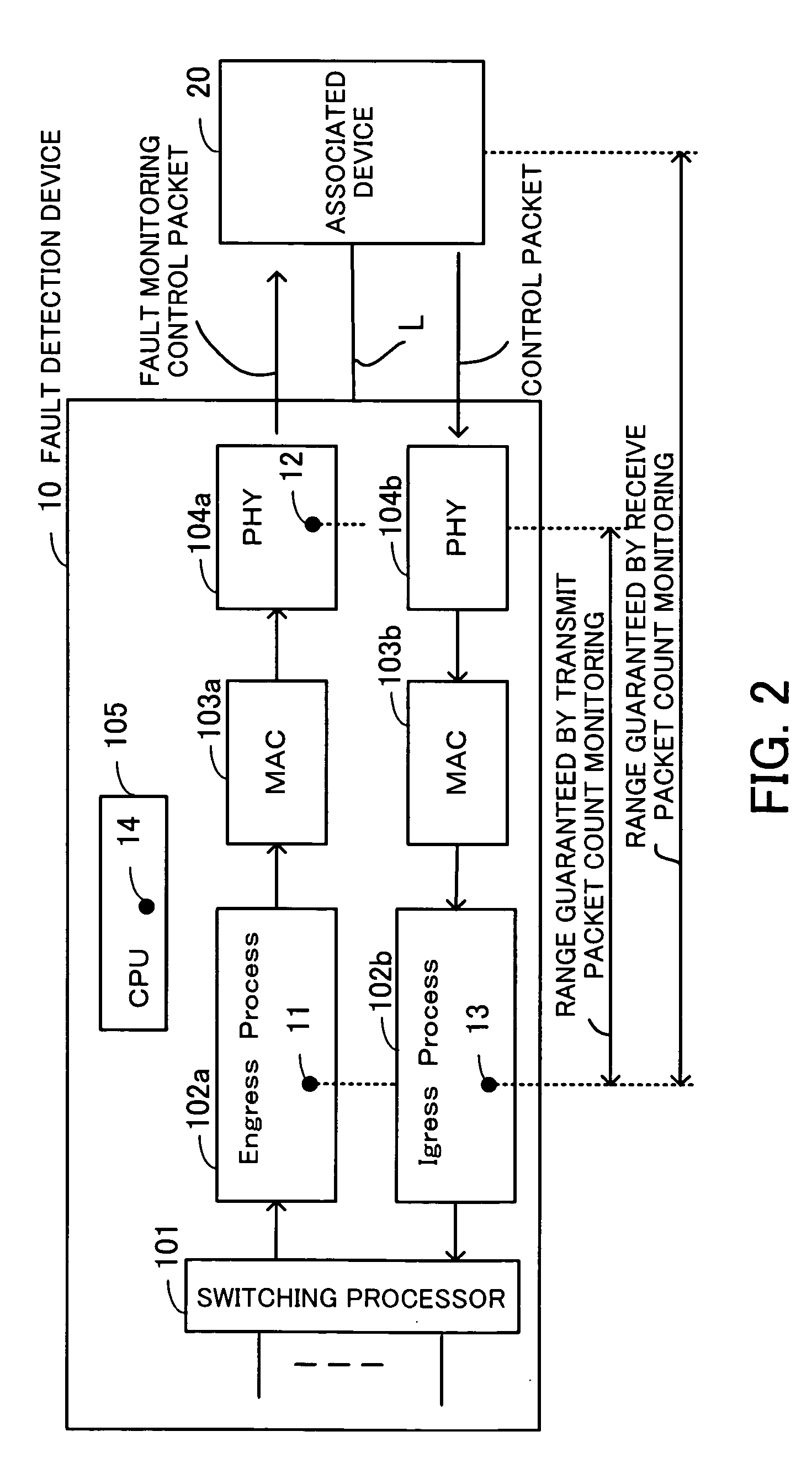Fault detection device
a fault detection and fault technology, applied in the field of fault detection devices, can solve the problems of long period, low accuracy, and serious damage, and achieve the effect of high accuracy in detecting network faults
- Summary
- Abstract
- Description
- Claims
- Application Information
AI Technical Summary
Benefits of technology
Problems solved by technology
Method used
Image
Examples
Embodiment Construction
[0046] Preferred embodiments of the present invention will be described below with reference to the accompanying drawings. FIG. 1 illustrates the principle of a fault detection device. The fault detection device 10 comprises a monitoring control packet transmitter 11, a transmit packet counter 12, a receive packet counter 13 and a fault detector 14, and detects faults on a network. The function of the fault detection device 10 may be incorporated, for example, in a Layer 2 switch on a wide area Ethernet.
[0047] The monitoring control packet transmitter 11 generates a fault monitoring control packet and transmits the generated packet to an associated device 20 with which the fault detection device 10 need not interoperate to detect faults according to an identical protocol (i.e., to a device of a vendor's make different from that of the fault detection device). The transmit packet counter 12 keeps count of the transmitted fault monitoring control packet.
[0048] The receive packet cou...
PUM
 Login to View More
Login to View More Abstract
Description
Claims
Application Information
 Login to View More
Login to View More - R&D
- Intellectual Property
- Life Sciences
- Materials
- Tech Scout
- Unparalleled Data Quality
- Higher Quality Content
- 60% Fewer Hallucinations
Browse by: Latest US Patents, China's latest patents, Technical Efficacy Thesaurus, Application Domain, Technology Topic, Popular Technical Reports.
© 2025 PatSnap. All rights reserved.Legal|Privacy policy|Modern Slavery Act Transparency Statement|Sitemap|About US| Contact US: help@patsnap.com



